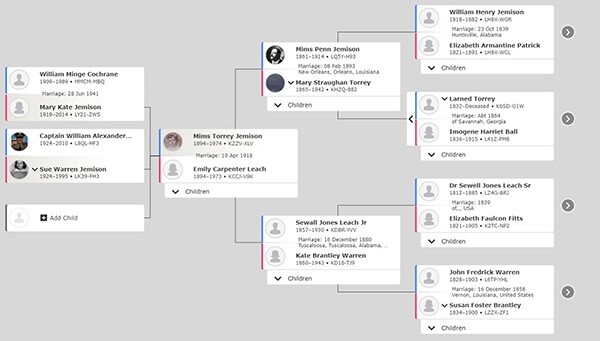
Start Digging
October is Family History Month! Where do you start in researching your ancestry? Here are some tips on using different research and resources to trace your family history.
Trace Your Roots
Scientists can tell a lot from your spit: our DNA holds the secrets of our origins and family tree. Genetic ancestry testing can trace the paternal/male side (Y chromosome), the maternal/female side (mitochondrial), and ethnic background (SNP - single nucleotide polymorphism). Putting this information together with family tree research can help you find out where you came from, what your background is, and find possible relatives.
DIY (sort of)
One way to start your genealogy journey is to create an account on a DNA tracing company website and register to have your DNA tested and give permission for your information used for their research bank. The company will send you a home kit to collect and package your saliva and then you'll send it back to the company for lab testing; after about six to eight weeks, your results will be emailed to you. In the meantime, you can use the digital family tree to trace your relatives based on what you already know, which should give you leads to possible relatives. You should also talk to existing family members and consulted obituaries to get names and dates correct as you fill in the digital tree. The more information you enter the more accurate and higher number of leads you'll get.
Find Your Branches

In addition to sending off your saliva (or not), take a trip to your local library branch or genealogical center (whether in person or virtually) to find books and resources to help you track certain family members or events that affected your family tree. For instance, Harris County Public Library offers full access to multiple online databases that can help in family research: go to https://hcpl.net/resources/genealogy-history/ and sign in with your library card number and PIN number to access our databases from anywhere (Ancestry Library Edition can only be accessed from a library branch)!
My Roots & Branches
Genetic ancestry testing and genealogy research certainly helped me to trace my Spanish and Mexican Indigenous side. I filled in a digital family tree and sent my saliva in a tube to be tested. With my own research and the results of my saliva sample, I found that I am:
- British (English & Irish) on my mother's side,
- Iberian (Spanish & Portuguese), and
- Indigenous Mexican (Coahuiltecan/Mexica/Lipan Apache) on my father's side.
My British ancestors immigrated to Canada in the 17th century and eventually settled in Louisiana and Texas.
My Iberian ancestors founded Monterrey, Nuevo León, Mexico in the 16th century (I still have a few 2nd, 3rd, etc. cousins who live there).
The Coahuiltecan were eventually conquered, displaced, and/or absorbed into the Lipan Apache of Chihuahua, México, and South Texas, and the Mexica ("Aztec") of Central Mexico. Most of my immediate Mexican/Chicano family members settled in San Antonio, where the TAP Pilam Coahuiltecan Nation resides.
I was also able to track my Mexican and Spanish side back to the first Royal Governor of what is now the state of Nuevo León, MX. Capitán Luis Carvajal y de la Cueva (1540-1590) was a politician, a conquistador, a colonizer, and a slave trader. Not a good guy by any means, but it is a good thing to learn about in the context of family, national, and world history.
Happy Digging!
Books for adults and kids to learn about tracing and researching your origins and family tree.





Add a comment to: Roots & Branches: discovering your origins & family tree